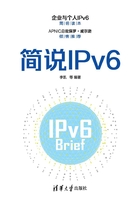
Foreword
I am delighted to provide the foreword for this important book,IPv6 Brief. I must commend CNISP for a publication dedicated to IPv6, written in Chinese for the Internet community in China.
My first visit to China as APNIC Director General was in 1998. It was well known at that time, that in all of China, there was less IPv4 address space than at a single university in the USA. During that visit I promised to ensure that China would receive the IPv4 addresses needed,according to the fair and equitable policies for IPv4 address distribution in the APNIC region. Of course, historical imbalances could not be reversed, but I am satisfied that the Internet in China now has the second largest national IPv4 address supply in the world, after the USA. This has allowed the huge success of the Internet, which has been embraced in China, as it has been in the rest of the world.
The global Internet is a single uniform network, which can permit connectivity between any pair of devices, located anywhere in the world. This is the power of the Internet, but it is only possible with an address space large enough to provide a unique global address to every device. For today's Internet, with 3 billion users and many more connected devices, IPv4 is not big enough to support full Internet connectivity. This is why IPv6 is essential.
In the very near future, the Internet will need to serve billions more people, and many billions of “connected things”. Without IPv6 the Internet simply cannot grow to meet this demand.
The challenge of IPv6 deployment is a global challenge which shared among all Internet users, services, and businesses. Everyone who relies on Internet products and services will soon understand the need for IPv6, and will soon demand it. Those companies who provide Internet products and services also need to understand IPv6, and be ready to satisfy this demand. Those who do not, will certainly be left behind, while others succeed.
This IPv6 book covers the history, basics, transition technology, security and development trend of IPv6. I trust that it will be a vital source of information for people in China to understand IPv6, and to contribute to successful IPv6 development in China.

Paul Wilson
Director-General of APNIC